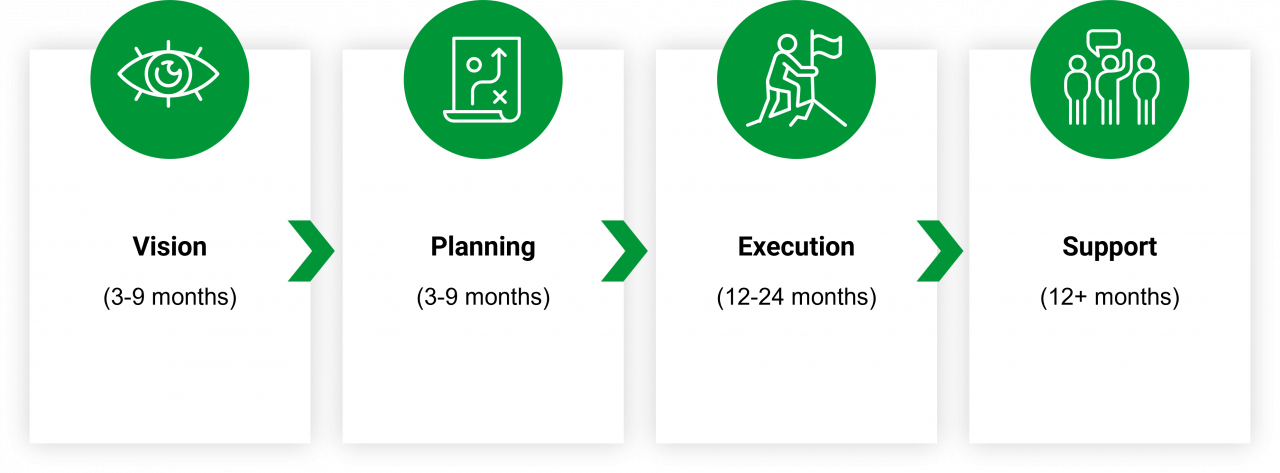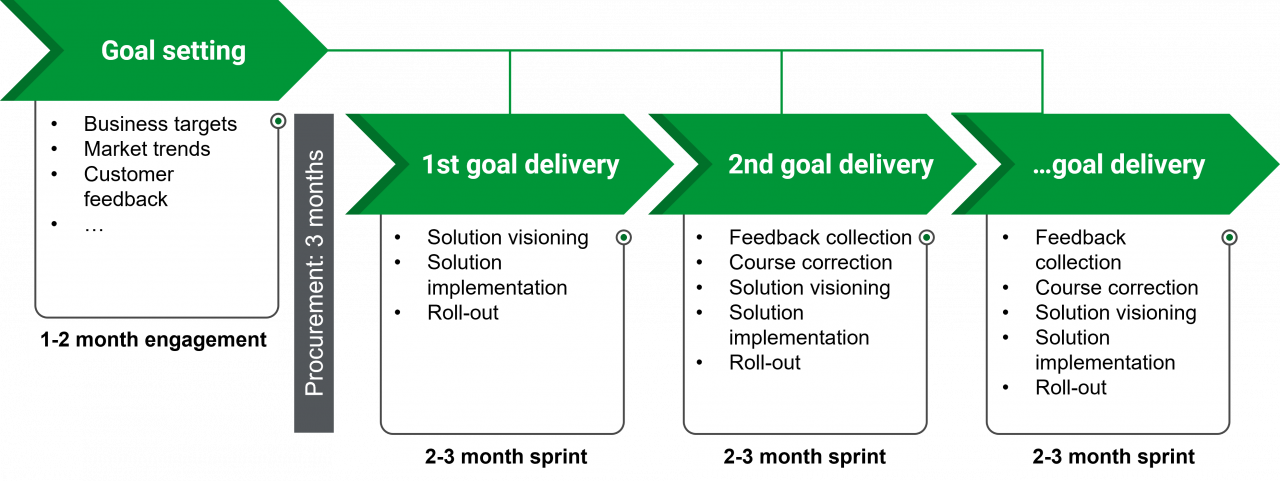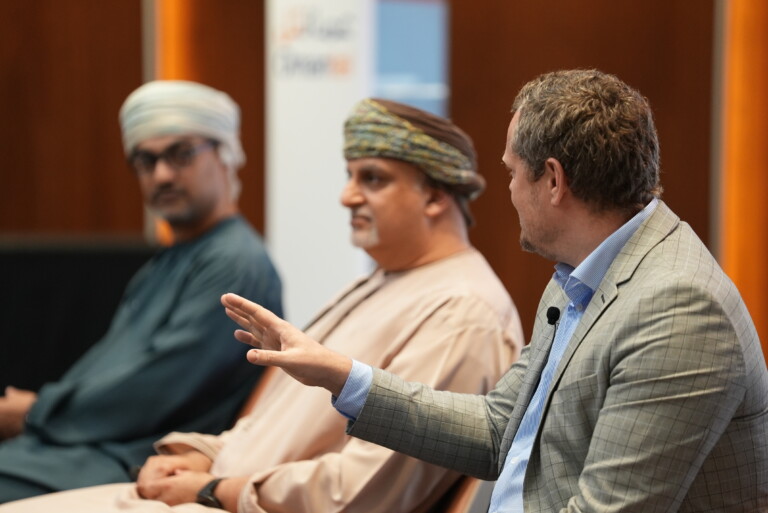Article
by Peeter Smitt, Business Area Director
An alternative approach to large-scale digitalization projects
Digital transformation of government services around the world in recent years is, in financial terms, a massive business. According to the World Bank, public procurement amounts to more than $11 trillion annually, or 12% of global GDP. Digital technology is playing a critical role in the ability of governments to provide public services efficiently and effectively – but there is a real risk that a significant amount of the public investment in digital transformation projects is wasted.
The well-trodden path
The traditional public procurement model is largely based on habit – ‘the way it has always been done’. Large-scale digitalization projects follow a well-trodden path that has been used for public procurement for decades. Consultants are hired and work in collaboration with the public body; the familiar and lengthy process begins: form your vision, plan, and execute (figure 1).
Figure 1: The traditional procurement journey

Historically, when the business environment was more predictable, this approach was acceptable and it didn’t matter too much if progress was slow (for the largest digitalization projects, it can take a minimum of 18 months for business value to begin to emerge). But today, when agility and speed are paramount, this is hardly the ideal environment for digitalization – and that might explain why it’s estimated that more than 70% of digitalization programs that are organized in this way ultimately fail to deliver what they promised.
Often, these programs fail because they are not grounded in users’ needs. The ‘big picture’ is set at the first stage; in other words, under the mistaken presumption that it’s possible to confidently predict the future. Problems only start to become apparent nine months or more down the road when an element of the vision cannot be implemented for a technical reason or the vision meets with an insurmountable barrier in the form of day-to-day reality. At that stage, a lot of money has been spent, and time has already passed; it might take more than a year before a potentially fatal flaw is uncovered.
A different way forward for public procurement
But there is a different way, as we’ve discovered in our work in Estonia and on other large-scale public procurement projects. Rather than focusing on the long-term vision, the alternative procurement approach (figure 2) begins with a clearly-defined set of business objectives which are broken down into smaller goals that can be achieved in a relatively short period of time – usually three to six months. Once the first goal is met, work moves on to the next step. If the goal can’t be met for any reason, it means that either the objective was wrong or the process wasn’t right; the feedback is rapid, and the team learns.
This is an iterative process that’s driven by business value and is designed to generate results as quickly as possible. The process adjusts over time to reflect the environment and any challenges that are encountered.
Figure 2: An alternative approach to public procurement

In practice, this means substituting an overall vision of how things would look in an ideal world with a series of measurable objectives. In the case of our work with Estonia, for example, the overall vision might have been ‘complete digitalization of the tax system’; we broke this down into a series of objectives, one of which was that a taxpayer would be able to complete and submit their tax return online in less than 20 minutes.
Benefits of this new approach
- This approach brings several benefits:
Earlier realization of business value – as soon as six months, if the goals are realistic - Rapid course correction and adjustment – problems emerge much more quickly
- Lower risks
- It encourages greater collaboration – consulting, product, engineering, and support capabilities are consolidated
Ultimately, this ‘baby steps’ approach builds smaller blocks in a linear way over time until a fully functioning consolidated solution is formed – except that it’s a final ‘vision’ that is rooted in reality rather than imagined at the start of the process. The traditional approach to procurement requires predictive foresight – but when it comes to digital technology, who knows what the future will look like?

An evolution in the approach to public procurement would require a change in perspective from everyone involved – not least from legislators, since public procurement regulations tend to be written in such a way that an organization has to buy an object, rather than a set of results. But the benefits to governments and citizens could be considerable – a more realistic, workable, and cost-effective approach to large-scale digitalization projects. There is a better way – so why not explore it?
Get in touch
Let us offer you a new perspective.


